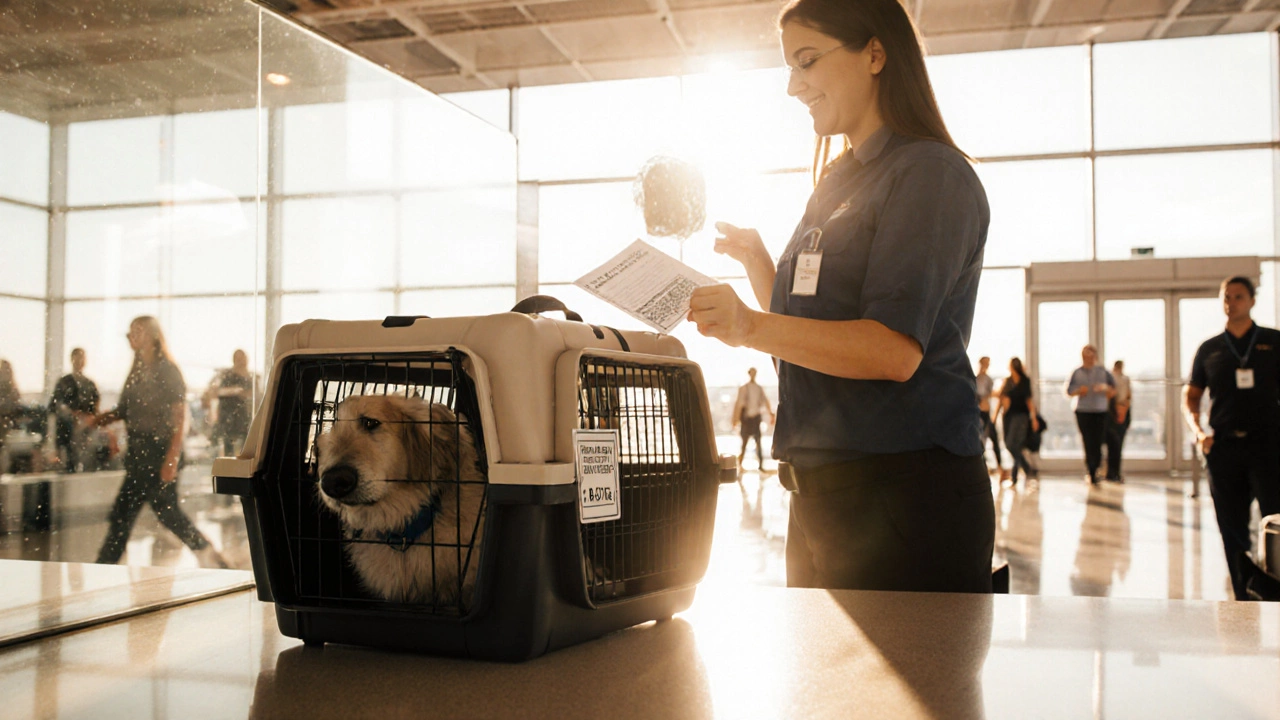Dog Cargo Flight Safety: What Every Pet Owner Must Know
When dealing with dog cargo flight safety, the practice of transporting dogs in the cargo hold of commercial aircraft while ensuring their health and wellbeing, you’re juggling a mix of regulations, airline policies, and practical prep steps. Also known as air cargo pet travel, it involves understanding airline pet policies, rules each carrier sets for size, breed, crate standards, and health paperwork, selecting the right pet travel carrier, a sturdy, well‑ventilated crate that meets IATA specifications, and complying with dog cargo regulations, government and international standards that dictate temperature limits, humidity control, and handling procedures. These pieces fit together like a puzzle: safe travel requires proper paperwork, a suitable crate, and a carrier that follows airline rules. Mastering dog cargo flight safety means treating each element as a step toward a calm, healthy arrival.
First, get the paperwork out of the way. Most airlines demand a recent health certificate, proof of vaccinations, and sometimes a breed‑specific waiver for brachycephalic dogs. Keep copies in a waterproof folder and attach them to the crate's exterior so handlers can verify details quickly. Next, focus on the crate itself. An IATA‑approved carrier must be large enough for your dog to stand, turn around, and lie down comfortably. Add a familiar blanket and a chew‑safe toy to reduce anxiety, but avoid loose items that could shift during turbulence. Temperature monitoring is another critical factor; many carriers now include built‑in thermometers, and you should confirm the airline’s temperature range (typically 5‑30°C). If you’re flying during summer or winter extremes, ask the airline about climate‑controlled cargo holds or consider a flight with a shorter layover to minimize exposure.
Lastly, think about insurance and contingency planning. Pet travel insurance, coverage that reimburses veterinary costs, accidental loss, or delays can be a lifesaver if your dog gets sick mid‑journey or if a flight cancellation forces an unplanned overnight stay. Check whether the policy covers cargo‑hold incidents specifically, as some plans only apply to cabin travel. Prepare a “travel kit” with extra food, water, a portable water dish, and any medication your dog needs. By stacking these safeguards—accurate documentation, a compliant crate, temperature awareness, and insurance—you create a robust system that protects your pet from the most common cargo‑flight risks. Below you’ll find a hand‑picked collection of articles that walk you through each of these steps in detail, giving you the confidence to book that ticket and focus on the excitement of the destination.

Is It Safe for Dogs to Fly in Cargo? Risks, Tips, and FAQs
Learn if it's safe for dogs to travel in cargo, understand airline policies, health risks, preparation tips, and FAQs to ensure a secure flight for your pet.
View more